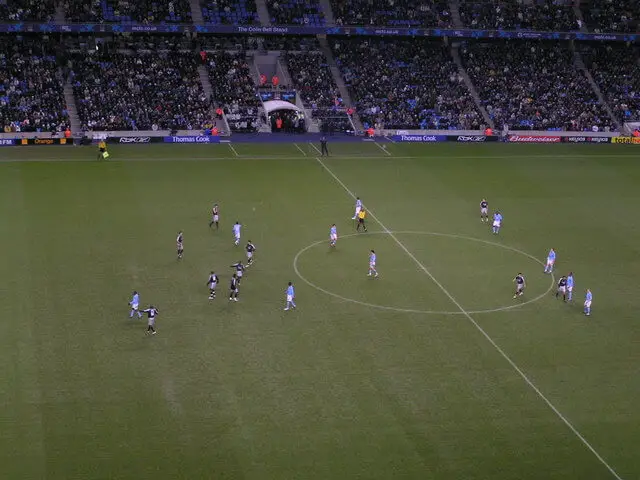Soccer, also known as football or association football, is the most popular sport in the world.
It is played by millions of people of all ages, genders, and skill levels.
Despite its global popularity, however, many people are still confused by the rules of the game.
In this blog post, we will simplify the rules of soccer so that even a beginner can understand them.
Let’s get started!
The Rules Of Soccer Simplified
We are going to break these rules down into four categories:
- The Basics
- Fluid play
- Fouls
- Special situations
First, let’s start with the basics.
1. The Basics
Soccer is a team sport that is played on a rectangular field with a goal at each end.

Each team has 11 players on the field, one of whom is the goalkeeper.
The objective of the game is to score more goals than the opposing team. A goal is scored when the ball crosses the goal line between the goalposts and under the crossbar.
The game begins with a kickoff, where one team passes the ball to a teammate from the centre of the field.
2. Fluid Play
After the kickoff, the game is played in a fluid, continuous manner, with the teams trying to move the ball up the field and score a goal.
==>>You can also read: How to play soccer?
The team in possession of the ball is called the attacking team, while the opposing team is called the defending team.
Players are not allowed to touch the ball with their hands or arms, except for the goalkeeper, who is allowed to use their hands within their designated penalty area.
If a player does touch the ball with their hand or arm, it is called a handball and the opposing team is awarded a free kick or a penalty.
Another important rule in soccer is the offside rule.
This rule states that a player cannot be involved in active play if they are closer to the opposing team’s goal than both the ball and the second-to-last defender.

As you can see from the image above, the last player on the left in light blue is clearly offside.
This is to prevent teams from having a player constantly hanging out by the opposing team’s goal, waiting for a pass.
So, it is important to watch the defenders’ positions to avoid being trapped by the offside rule.
This rule is very useful, otherwise, games won’t be so interesting.
Imagine seeing a striker constantly waiting for the ball on the other side of the pitch, rather than participating in gameplay. This would be boring!
So, if a player is caught offside, the opposing team is awarded a free kick.
Fouls are also a common occurrence in soccer.
==>>Read the full article on the offside rules in soccer
3. Fouls
A foul is any action by a player that is deemed dangerous or unsportsmanlike by the referee.
Examples of fouls include tripping, pushing, and kicking an opposing player.
If a player commits a foul, the opposing team is awarded a free kick or penalty, depending on where the foul has been committed.
4. Special Situations
Finally, there are corner kicks, penalty kicks, and throw-ins.
A corner kick is awarded to the attacking team when the ball goes out of bounds over the goal line after being last touched by a defender of the defending team.
A penalty kick is awarded to the attacking team when a foul is committed within the penalty area by the defending team.
The throw-in is awarded to a team when a player from the opposing team last touched the ball before it went out of bounds over the sideline.
For example, there is team A and team B. If a player from team A is the last person to touch the ball before it went out, the throw-in will be awarded to team B.
Simple as that.
The role of the referee
The referee is responsible for ensuring that the game is played fairly and safely, and for enforcing the rules of the game.
He has the authority to stop play if necessary and to award free kicks, penalties, or other consequences for fouls or violations of the rules.
The referee must also keep track of the time played, and make sure that the game does not go over the allotted time.
They must be knowledgeable about the rules of soccer, and they must also have good communication skills, as they will need to explain their decisions to players and coaches during the game.
Overall, the role of the referee is essential to maintaining the integrity of the game and ensuring a fair and enjoyable experience for all involved.
The importance of fair play and sportsmanship
In soccer, as in any sport, fair play and sportsmanship are essential for maintaining a positive and enjoyable playing environment.
This means that players, coaches, and fans should strive to play the game with integrity, respect, and a sense of fairness towards their opponents.
Good sportsmanship involves treating opponents with respect, following the rules of the game, and accepting the outcome of the game, whether it is a win, loss, or draw.
Fair play, meanwhile, involves playing the game in a way that is safe, respectful, and within the rules.
Ultimately, by valuing fair play and sportsmanship, players can help to create a more positive and supportive culture both on and off the field and can help to promote the values of teamwork, respect, and fair competition that are essential to any successful sport.
Final Word
In conclusion, soccer is a simple sport with a few basic rules.
By understanding the rules of the game, you’ll be able to enjoy watching and playing soccer even more.
Remember that soccer is a game of skill, strategy, and teamwork, and it is meant to be fun for everyone involved.
Hope this article has simplified the rules of soccer for you, and that you have been enlightened.

